Is Chess the Oldest Game? A Brief History of Chess
Whether you are an avid chess player or a student researching history, there is a lot of information to talk about when it comes to a brief history of chess. You might want to know who created chess, what types of chess games there are, when was chess invented, and is chess the oldest game in the world?
Here are the answers to all of your questions.
A Brief History Of Chess
These days, we think of chess as one of the most widely played games on the planet, with most households containing at least one chess set of some description. The humble chess board might seem like a relatively unassuming item to some, but to others, it is an object that represents centuries of history and heritage.
Chess pieces have been the playthings of people stretching back some 1,500 years and it’s this rich history that we look at today, starting right back to its origins in 7th century Asia.
When Was Chess Invented?
More than 1500 years stand as a reference for one of the oldest games in history: chess. From the first centuries of its existence until the present times, millions of people have indulged in the art of playing chess. Whether they were novices trying to earn a reputation, royal faces acclaiming their superiority, or ardent chess playing trying to prove their skills, all have experienced the exquisite mind pleasures offered by chess. Nowadays, chess is no longer regarded as an exclusive game, but it has preserved its high demands: a very well-organised mind and extensive training are needed to win a chess game or competition.
Chess grew out of Chatarung, an Indian game dating back to 600 A.D. As chess developed, it had different rules and different pieces than it does today. The queen was actually a "ferz", a male counsellor to the king and the weakest piece on the board. The bishop also didn't have the sweeping powers of diagonal movement that it does today, making the game even slower and more methodical in development. In order to advance the game, some players began their matches by setting up in mid-game, having skipped opening movements altogether.
Chess spread around the world as it was introduced to other civilisations by merchants and traders. As chess spread, local variations and rules developed.

Who Invented Chess?
There is much debate as to who created chess, the exact origin of chess boards, and chess pieces as we know them today, but the game’s first appearance in recorded history comes around 5th century AD, with mention of the game being found in both India and China. Which of the two countries is responsible for the game’s invention is unsure, but it is known that the game in its earliest form spread from there to Persia - the area now known as Iran.
Many states claim to have invented the chess game in some incipient form. The most frequently held belief is the fact that chess originated in India, where it was called Chaturanga, which seems to have been invented in the 6th century AD. It is thought that Persians created a more modern version of the game following the Indians, although this is usually believed. In reality, the oldest known chess pieces are discovered in excavations of early Persian territories.
Another theory exists that chess arose from the similar game of Chinese chess, or at least a predecessor thereof, existing since the 2nd century BC in China. David Li and Joseph Needham are two of several scholars that have favored this theory.
Chess eventually spread westward to Europe and eastward as far as Japan, spawning variants as it went. One theory implies that it migrated to Persia from India, where its terminology was translated into Persian, and its own name changed to chatrang. The entry of chess into Europe is marked with a huge improvement in the powers of the queen. The earliest known texts seem to suggest a bi-directional spread in the Persian empire. In fact, the earliest known reference points to Shah Ardashir as being a master of the sport, his rule was from 224 - 241 AD. This would indicate that chess was invented some time before his rule.
From Persia it entered the Islamic world, where the names of its own pieces largely remained in their Persian forms in early Islamic times.
- Checkmate
- Rook
- Bishop.
- Queen.
The game spread through the entire Islamic world following the Muslim conquest of Persia. Chess eventually reached Russia via Mongolia, where it was played at the beginning of the 7th century. It was introduced in the 10th century by the Moors into Spain, and described covering chess, backgammon, and dice named the Libro de los juegos. Chess additionally found its way across Siberia into Alaska.
A Brief History of Chess
In 1948, the death of World Champion Alexander Alekhine created the need for a new method to determine the. FIDE, the French chess organisation Federation Internationale des Echecs, held a title tournament among the world's best chess players before naming Mikhail Botvinnik World Chess Champion.
America would have to wait until 1972 for its first (and only) World Chess Champion in Bobby Fischer. At the height of the Cold War, Bobby Fischer defeated Boris Spassky of the U.S.S.R. in Reykjavik 12.5-8.5.
In the 1990s, the chess world would be captivated by chess matches between computers and humans. Reigning World Chess Champion Garry Kasparov would defeat IBM computer programs Deep Thought and Deep Blue in 1989 and 1996, before losing to Deep Blue in 1997 in a rematch by a score of 3.5-2.5.
In 1993, World Chess Champion Garry Kasparov split from FIDE and established the Professional Chess Association. FIDE would soon strip Kasparov of his title and it was not until 2006 that the title of World Chess Champion would be reunified in one player, Vladimir Kramnik.
The current World Chess Champion is Magnus Carsen from Norway!

So, Is Chess the Oldest Game?
This ancient game of chess whose origins lie in the darkness of history has never lost its popularity throughout the ages. The way chess is played today is indeed much different than it was played hundreds of years ago. The first form of chess was found in an Indian game called Chaturanga in the 7th century AD. The modern era of chess, however, may be said to date back to about the 15th century, when the pieces gained their present form. The first serious analyst of the game was Spain's Ruy Lopez de Segura (fl. 16th century), who in 1561 devised an opening that is still used.
A new era began with the publication of Francois Philidor's Analyse du jeu des echecs (1749), which was translated into several languages and led many people to play and study the game. Germany's Adolf Anderssen (1818-79) defeated many outstanding players to win the first modern international tournament, held in London in 1851. He was noted for his beautiful combination style. Paul Morphy generally considered the first world champion won first place at the First Chess Congress, held in New York City from Oct. 5 to Nov. 10, 1857, at the age of 20. On October 10 of that year a national organization, the United States Chess Federation was established.
Despite his great achievements Morphy quit playing chess at around 21 and never competed in a tournament again. Wilhelm Steinitz first official world champion brought new concepts to the game that helped the development of modern chess strategy. However, Lasker's psychological game showed that chess wasn't played just with the mind but also with feelings. Many of his opponents felt like they were gonna win when Lasker made unsound moves, indeed it was the beginning of their ends. Many authorities regard the Cuban player Jose Raoul Capablanca as the greatest in the history of chess. There was no doubt that he had incredible chess skills and it was believed that if he would have practiced more rather than just relying on his God-given talents he would have been unbeatable at his time. However, Capablanca lost his title surprisingly to Alekhine in 1927 and never had a chance to take it back again. Though Alekhine promised a rematch to Capablanca he didn't keep it. Instead, he preferred to play rather weak opponents to defend his title.
Alekhine was a world champion until his death. He was the first one at his day to regain his title, after losing to Euwe in 1935 he got it back two years later. After the sudden death of Alekhine, a five-player world championship match was held in 1948 and Botvinnik became the sixth world champion winning 3 points ahead of Smyslov. This was also the beginning of the long Russian domination until 1972. Smyslov, Tal, Petrosian were other Russian champions during that time. Bobby Fischer, at the age of 15, became the youngest international grandmaster in history after establishing himself as the best player in the United States by winning, at the age of 14, the U.S. Open. He became world champion in 1972 by defeating the Soviet Boris Spassky but then forfeited the title in 1975, living in seclusion since then. From 1975 to 1985 the title was held by Anatoly Karpov of the USSR, who was dethroned by his countryman Garry Kasparov. Kasparov has retained the title in subsequent championship matches against Karpov and other opponents.

The Evolution of Chess Pieces
The earliest examples of chess pieces coming from India were named Shah, meaning King, Rukh meaning Rook, and Fil meaning Bishop. They were much larger than standard chess pieces that people use today and were beautifully carved from ivory by hand. The names chess pieces have today in the Western world are the closest approximation possible to these ancient words.
The game remained there for a short time until Persia was conquered by the Arabs, which led to the game being taken up by its large Muslim population and spreading across Europe. This was a landmark moment for the game, as chess boards and pieces were now commonplace across the whole of both African and Asia.
-
Charlemagne Chess Pieces
-
Romantic Chess Pieces
Evolution Of Chess
At last count, the game of chess was played by over 600 million people, which makes it one of the most widely played games in existence. With the advent of smartphones and the internet, people are able to play against each other whatever time it is and wherever they are. In fact, you don’t even need a chess set , as playing online has become so popular that it’s almost as popular as visiting Facebook - and that’s saying something!
However, this digital revolution has done nothing to diminish the popularity of the game in its purest form, with a real chess board, 16 black chess pieces and 16 white. There are literally thousands of international chess tournaments each and every year, illustrating that some millennia and a half since the game was created, it’s still going from strength to strength.
Learning the Game of Chess
Perhaps the popularity of the game is down to the fact that it’s one of the best ways to test your wits, putting every mental sinew through its paces or maybe it’s just the majesty and magic that the game conveys. One thing is almost certain however and that is that we will likely still be talking about the game in another 1,500 years, such is its appeal.
While the organised mind is something you were born with and could hardly be acquired (at the best can be improved), training is available to anyone willing to immerse in the fascinating world of chess. In fact, there are several ways of starting your chess experience. The traditional and probably the most effective one is taking lessons with a skilled trainer. Trainers will not only explain to you all the basic notions about chess, but they will also use notions, terms and make associations that are age-appropriate and take the time needed for you to understand the basic principles. Furthermore, the trainer is there to help you with examples, demonstrations, and further explanations until everything is clear for you. A personal trainer is almost compulsory if you are a beginner in chess, but it is not necessary when you are looking to perfect your skills and acquire more technical experience.
A personal trainer has his positive sides, but there are still two things which must be noted: the first one is that personal trainers sell their services quite expensive, which may be an impediment for those with low incomes. The second issue is that usually, attending a personal trainer or chess teacher requires a fixed schedule, which many people cannot deal with. This is why a new wave has emerged lately: online chess training.
Online chess training means posting chessboard lessons on a website and deliver them to interested people via the internet. You can find video tutorials explaining each and every step of a strategy or you can find texts sharing with you the insights of the chess experience. And because there is no training without direct interaction, the sites have special features enabling you to ask questions about things that have been left unclear in your mind or about things you need further information about.
While these sites do not provide a gradual discovery of the information and send it bulk to the user (which may overwhelm the student and give up learning), they are still a good alternative for those determined to learn chess as they can be customised to fit any schedule. Furthermore, they are relatively cheap and you can also get some free information if you are ready to spend some time looking for it.

The last chess training method is via chess set computer. This is similar to online training, yet without requiring access to the internet network. All you need to do is purchase the device (computer chess or electronic chess) and switch it to tutorial or teaching mode. There you will be given lessons and demo games about different stages in chess, starting with the beginner level and ending with the expert one. This is also a convenient solution, especially when you have to pay only once when acquiring the device and then be given lots of information and advice for your chess performances.
All the chess training methods above are suitable for different chess levels and can be adjusted according to your skills. So, the price and time are the criteria which will make the difference in the end. Also, your personal preference for one or the other method should be taken into consideration for fast learning and a pleasant chess experience.
Chess's international governing body is FIDE, which has presided over the world championship matches. Most countries of the world have a national chess organization too. Although chess is just not an Olympic sport, it has its Olympiad, held every two years as a team event. The simple fact it would alter the area of chess, however, is certain. The character of the game is that every move produces numerous possible continuations. The main part of marble is the fact that it is multi-coloured and typically employed for sculpture.
Becoming intimately knowledgeable concerning the capabilities and limitations of every one of your pieces will greatly increase your odds of succeeding in your chess games. Many of Black's opening moves are somewhat more defensive in nature and try to undermine White's initial benefit. The first couple of moves of a chess game, called the chess opening, are among the most studied facets of the game, largely because of how important they may be. Now look at a normal chess piece position that can possess up to 218 movement possibilities. There are particular moves and strategies that you must learn in order to be successful.
A lot of people often make the error of taking an excessive amount of time plotting their early game strategies and counters and, like a fatal result, they will normally use less time to produce their moves during the late game. Everyone appears to have a distinct clever answer. You ask questions so you can determine their requirements and problems. The thought of it being a mixture of elements from different board games has to merit. Another reason this technique works well is the fact that the majority of humans, if not all, are ready to undergo some kind of a trance when they're cornered. It's a well-known actuality that White has a little advantage at the start of the game. Many India was below the constraint of the East India Company in the very first half of the 19th century.



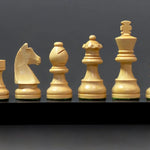
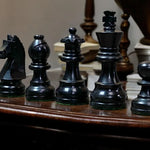
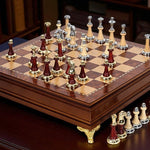
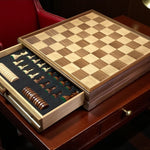
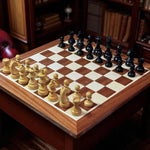
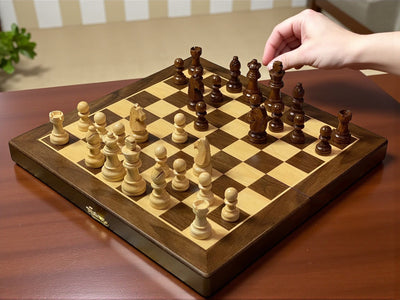
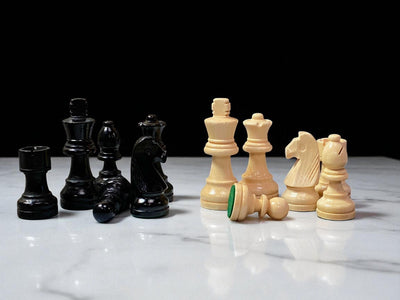
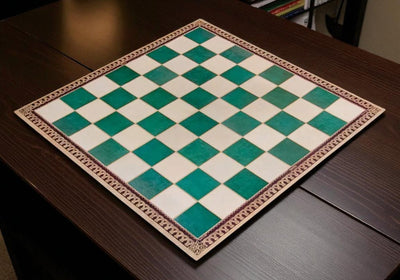
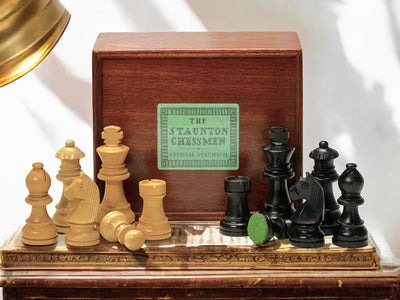
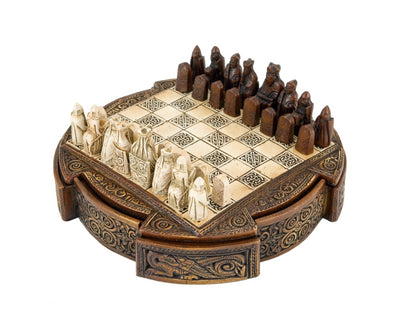

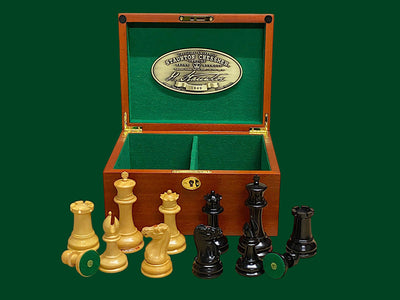
Leave a comment